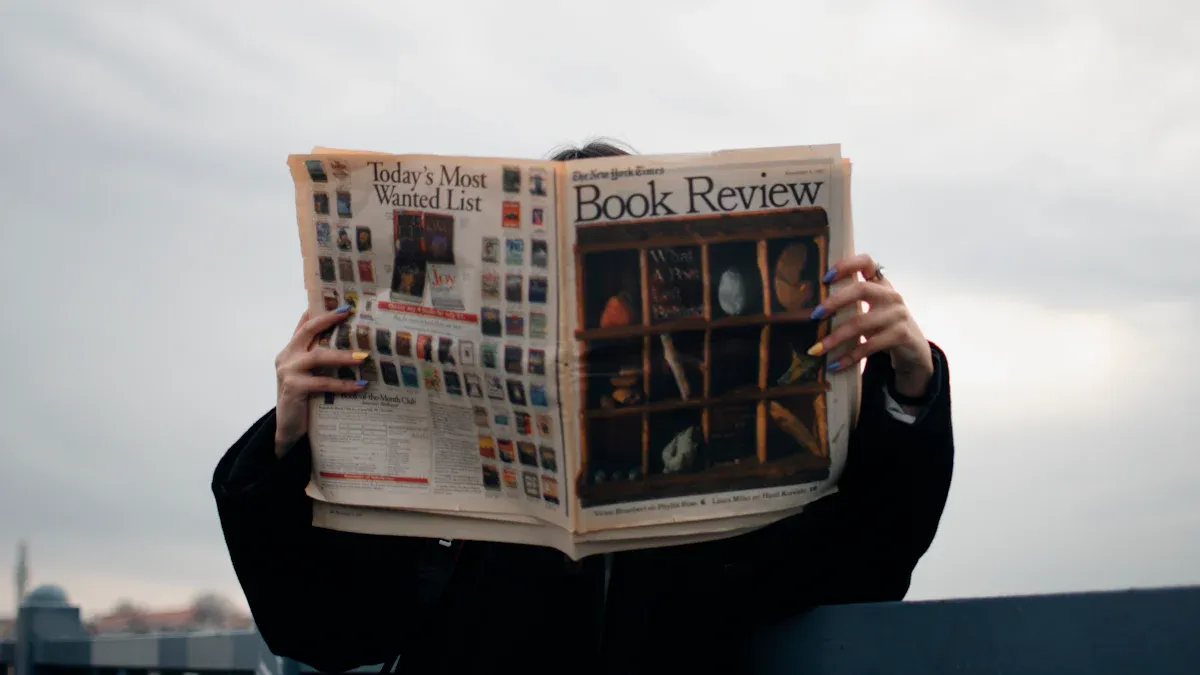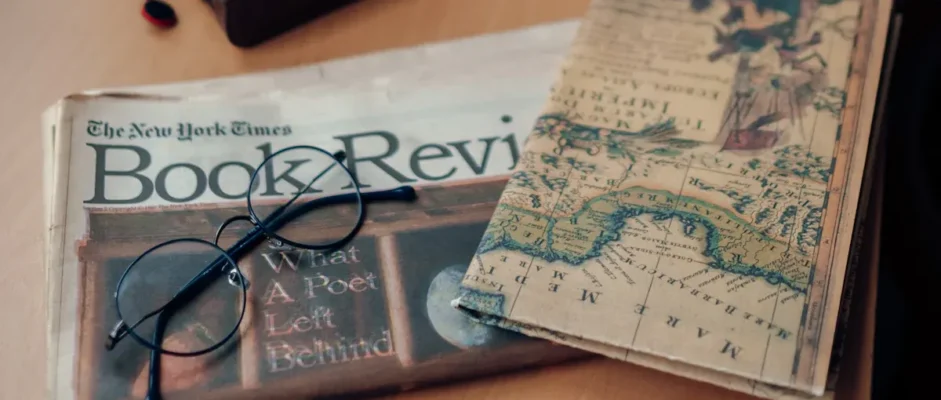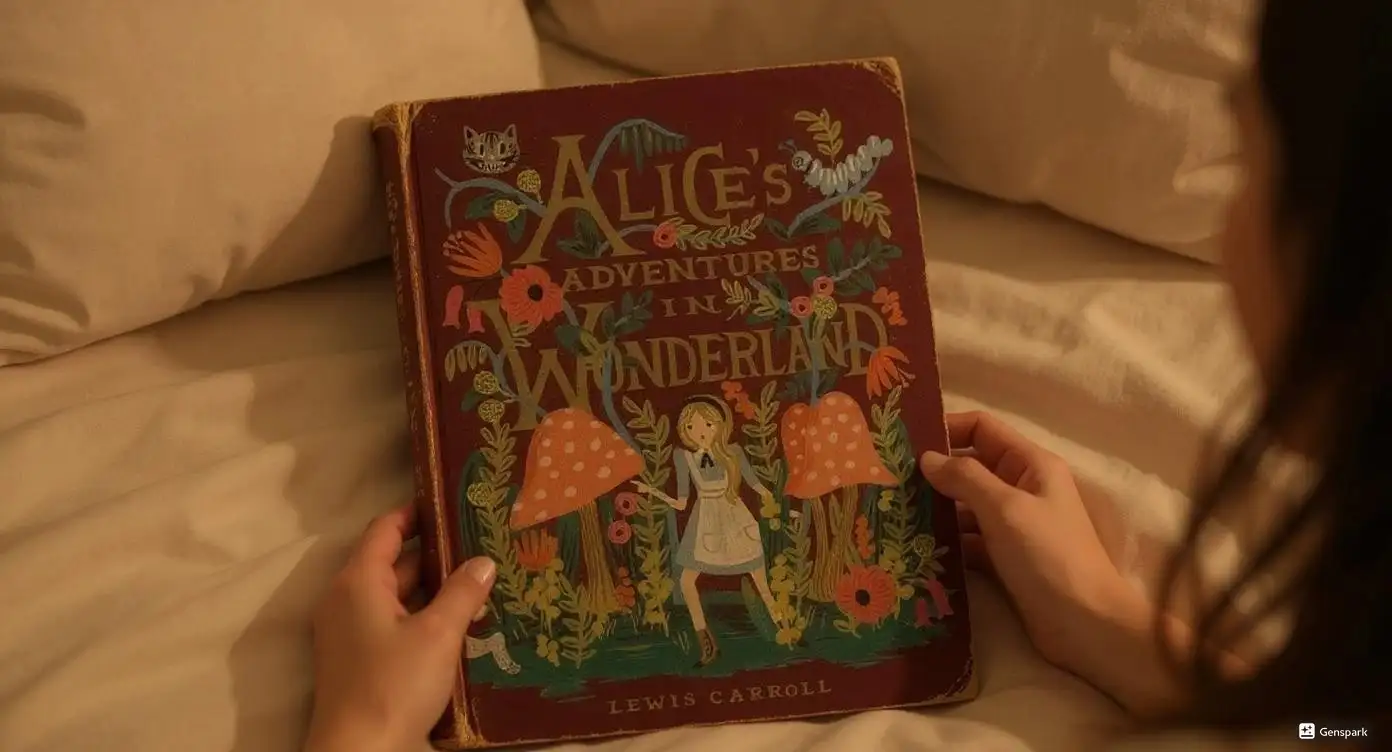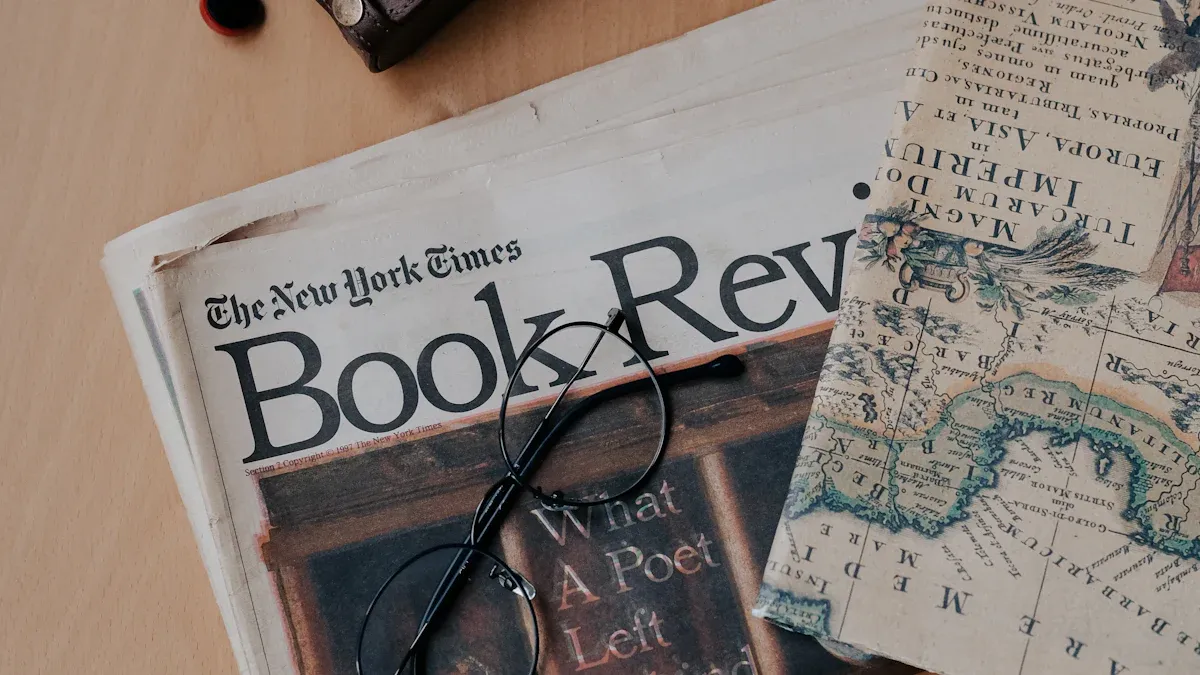I tore through A Far Better Thing by H.G. Parry in one of those late-night reading frenzies. If you crave historical fantasy with faery mischief, this book hits the spot. Fans of “A Tale of Two Cities” or dark fairy tales, you’ll love the changeling twist set during the French Revolution. Fantasy blends like this keep trending with readers. I felt every magical, emotional moment—this story is pure character-driven magic.
Key Takeaways
A Far Better Thing mixes real history with faery magic.
This makes a new and exciting story set in the French Revolution.
The book has strong and emotional characters. Sydney Carton stands out the most.
His changeling nature gives the story more feeling and meaning.
People who like historical fantasy will enjoy this book.
Fans of classic retellings will also like it. If you like stories about love, sacrifice, and hope, you will find this book rewarding.
Is It Worth Reading?
Main Appeal
I’ll be honest—A Far Better Thing by H.G. Parry had me up way past midnight. I kept telling myself, “Just one more chapter,” but the story’s mix of historical grit and faery magic pulled me in every time. If you love books that blend real history with a twist of the supernatural, this one delivers. The French Revolution setting feels raw and dangerous, but the faery elements add a layer of wonder and unpredictability.
What really hooked me? The characters. Sydney Carton’s journey as a changeling felt so personal, I found myself rooting for him even when he made mistakes. The emotional stakes run high. I felt my heart race during the most chilling scenes, and I’ll admit, a few moments left me gasping. The writing style pays tribute to Dickens but never feels stuffy or old-fashioned. Instead, it’s sharp, witty, and full of heart.
Who Should Read
I always try to match books with the right readers. A Far Better Thing by H.G. Parry works best for people who:
Crave historical fiction with a magical twist
Enjoy character-driven stories with emotional depth
Love retellings or reimaginings of classics like “A Tale of Two Cities”
Want a story that balances darkness with hope
Demographic research backs up these recommendations. Publishers and marketers use:
Public data sources and online studies to spot trends in reader interests
Social media analytics to see who’s talking about historical fantasy and fairy tales
Buyer personas built from customer feedback and sales data to understand what age groups and lifestyles connect with these stories
Regular surveys and trend monitoring to keep up with changing tastes
If you’re a fan of dark fairy tales, historical drama, or stories about sacrifice and identity, you’ll probably find something to love here. I have to give props to Parry for making a classic feel fresh and magical.
Premise & Inspiration
A Tale of Two Cities Connection
I picked up A Far Better Thing by H.G. Parry because I love a good classic twist. The story borrows its bones from Dickens’ “A Tale of Two Cities,” but it doesn’t just copy. It plays with the idea of duality—light and dark, hope and despair, love and revenge.
Dickens used London and Paris as mirrors, flipping between them to show how people and places can be both good and bad. Parry does the same, but she adds magic to the mix.
The book follows Sydney Carton, a character who always felt like an outsider. In Dickens’ version, Carton and Darnay are like two sides of a coin—one lost, one hopeful.
Parry keeps this doppelganger idea but gives it a magical reason: Carton is a changeling, swapped by faeries at birth.
The story jumps between the chaos of the French Revolution and the secret world of faery, just like Dickens switched between cities.
Dickens loved using contrasts—wisdom and foolishness, light and darkness. Parry honors that style. She uses quick shifts in setting and tense, and her characters feel like they’re always standing at a crossroads. I noticed the same tension and drama, but with a magical edge.
Faery & Changelings
The faery twist grabbed me right away. Parry doesn’t just sprinkle in a few magical creatures. She dives deep into old faery stories, especially changeling legends from Irish and Scottish folklore.
Changelings are fae children swapped with human babies. People believed they could spot a changeling by odd looks or strange behavior.
Some tales say faeries took children to improve their own families or for other mysterious reasons.
Stories from Ireland and Scotland talk about ways to reveal a changeling, like making it laugh or doing something odd with eggshells.
Parry’s faeries aren’t just background noise. They want revenge, and their world feels dangerous and unpredictable. I recognized details from W.B. Yeats’ collection of Irish folklore, like the idea that changelings sometimes forget their true nature and live as humans.
The book uses these old stories to make Carton’s struggle feel real and heartbreaking. The faery world isn’t just a place of wonder—it’s a place of risk, secrets, and hard choices.
Plot & Setting

French Revolution
The story throws you right into the chaos of the French Revolution. I could almost hear the crowds and feel the tension in the air. Parry paints Paris as gritty and dangerous. The city feels alive, full of fear and hope at the same time. I found myself holding my breath during scenes with mobs and secret meetings. The guillotine looms in the background, always a threat.
The streets are dirty and crowded.
People whisper about spies and traitors.
Every choice feels risky.
I love how the book doesn’t shy away from the darkness. It shows the cost of revolution, but it also gives us moments of kindness and bravery.
Faerie Realm
The faerie world in this book feels both beautiful and scary. Parry draws from Irish and Celtic myths, like Tír na nÓg and Mag Mell, where magical lands sit just beside our own. These places feel close, almost like you could stumble into them by accident. I recognized hints of these legends in the way the faerie world overlaps with Paris.
Time moves differently in the faerie world.
The rules don’t match ours—nothing is safe or certain.
Faeries hold grudges and play tricks, but their world sparkles with strange beauty.
J.R.R. Tolkien once wrote that faerie stories create a special kind of magic, not just about elves or fairies, but about a place that feels real and mysterious. Parry nails that feeling. I never knew what would happen next, and that kept me turning pages.
Characters

Sydney Carton
Sydney Carton really stood out to me. Parry makes him a changeling, which gives his story more layers. I could feel his sadness. He never feels like he belongs. He is stuck between two worlds. He struggles with who he is. He wants to fit in, but his faery side pulls him away from those he cares about. Watching him fight with himself made me cheer for him, even when he made mistakes.
Carton’s story is about internal conflict. He wonders if he matters in both the human and faery worlds.
His journey made me think of stories where every character has their own path, like in The Lord of the Rings. Carton’s problems happen at the same time as the bigger story about the revolution and faery revenge.
Parry ties together Carton’s struggles inside, outside, and with others, so his changes feel real.
I have to say Parry made Carton’s sacrifice feel magical and very human.
Charles Darnay & Others
The way Carton, Darnay, and the rest interact kept me interested. Here’s a quick look at what I noticed:
Aspect | Evidence Summary |
|---|---|
Carton and Darnay want the same things but act differently. Carton is the anti-hero. Darnay is the classic hero. | |
Thematic Focus | Sacrifice and redemption guide what they do. Carton’s big moment is different from Darnay’s steady goodness. |
Character Roles and Relationships | Both care about Lucie, but Carton’s love is unselfish. Darnay’s love is more about keeping her safe. Their rivalry and friendship help them both grow. |
Social and Political Context | Darnay’s past brings problems. Carton’s choices change everyone’s future. |
Duality and Inner Conflict | Both men have their own struggles—Carton with feeling good enough, Darnay with his past. |
Parry uses these links to make the cast feel real. Every character’s choice matters, and their stories connect in a way that made me want to keep reading.
Themes
Love & Sacrifice
I felt the love and sacrifice in this story right from the start. Sydney Carton’s journey hit me hard. He cares deeply, even when he thinks he doesn’t deserve happiness. His choices show what it means to give up something for someone else. I saw how Parry uses Carton’s changeling nature to make his sacrifice feel both magical and real.
Carton’s love isn’t loud or flashy. It’s quiet, steady, and sometimes painful.
The story asks: What would you give up for someone you love?
I found myself thinking about my own life and the people I care about.
“Sometimes the biggest acts of love happen in the shadows, where nobody sees.”
Scholars like Ernest Bormann talk about how stories use repeated themes to connect with readers. I noticed how Parry’s use of sacrifice “chains out” through the whole book, making it feel honest and believable.
Justice & Revolution
The French Revolution setting brings up big questions about justice. I saw people fighting for fairness, but also making mistakes. The book doesn’t pretend that revolution is simple. It shows both the hope and the danger.
Characters struggle with what’s right and wrong.
Justice isn’t always clear. Sometimes, good people get hurt.
The faery revenge plot adds another layer, making me wonder who really deserves justice.
I liked how Parry links these themes to the characters’ choices. The story feels real because it doesn’t give easy answers. It made me think about how stories shape what we believe about right and wrong.
Writing Style
Homage to Dickens
I could feel the Dickens influence on every page. Parry doesn’t just copy his style—she celebrates it. Here’s what stood out to me:
The sentences have a rhythm that made me want to read them out loud.
I saw vivid pictures in my mind, like the crowded Paris streets or the eerie faery gatherings.
The book paints every setting with rich detail, so I felt like I was right there.
Parry tackles big ideas like social injustice and uses her characters to explore them.
There’s a sharp sense of irony, poking fun at the rules and the people in charge.
The story asks tough questions about right and wrong, just like Dickens did.
Every character feels important, even the ones who only show up for a moment.
The history feels real, not just a backdrop.
Description and Support | |
|---|---|
Vivid Imagery | I pictured scenes as if I was watching a movie—so clear and detailed. |
Dramatic Scenes | Some moments made my heart race, especially during the revolution. |
Complex and Balanced Sentences | The writing flows, mixing short and long sentences for effect. |
Rich Descriptive Detail | Every place and person feels real, not just names on a page. |
Themes of Social Injustice | The story keeps asking: Who gets justice? Who gets left out? |
Use of Irony and Satire | Parry slips in clever jokes and sharp observations. |
Moral and Philosophical Commentary | The book made me think about what’s fair and what’s not. |
Focus on Character and Plot | Every character has a purpose, and their choices matter. |
Engagement with Historical Context | The French Revolution isn’t just a setting—it shapes everything. |
Fantasy Elements
Parry’s fantasy writing pulled me in right away. She doesn’t just add magic for fun. The faery world feels wild and unpredictable. I had to use my imagination to picture the impossible—like time moving differently or faeries holding grudges for centuries.
The story made me think about what’s possible and what isn’t.
Magic and faery tricks aren’t just for show—they change the way the characters see themselves and each other.
I noticed how the fantasy parts made me question what’s real and what’s just a story.
Fantasy books like this help me see the world in new ways. They spark creativity and make me wonder, “What if?” That’s the real magic.
Parry’s mix of history and fantasy kept me guessing. I never knew what would happen next, and I loved every minute of it.
Strengths & Weaknesses
Strengths
I have to give props to Parry for her character development. Sydney Carton’s journey felt real and raw. I saw his struggles and growth, and it made me care about him. The side characters also stood out. Each one had a purpose and a story. The book’s narrative cohesion impressed me, too. The story moved smoothly from the chaos of Paris to the wild magic of the faery world. I never felt lost or confused.
The emotional moments hit hard. I found myself rooting for Carton, even when he messed up.
The mix of history and fantasy kept things fresh. I loved how Parry used old faery legends in a new way.
The writing style felt sharp and witty. I could almost hear Dickens in the background, but Parry made it her own.
Here’s a quick look at how I break down the strengths, using a simple framework:
Aspect | Description |
|---|---|
Main Idea | Strong focus on love, sacrifice, and identity |
Structure | Clear flow between historical and magical storylines |
Tone and Style | Conversational, heartfelt, and sometimes playful |
Character Development | Deep, believable, and emotionally engaging |
Flaws
To be fair, the book isn’t perfect. Some parts felt a bit slow, especially in the middle. I sometimes wanted more action or faster pacing. The faery world, while beautiful, left me with questions. I wanted more details about the rules and the faeries’ motives. The story’s cohesion sometimes slipped when switching between worlds. A few transitions felt abrupt.
Some side characters faded into the background. I wished for more time with them.
The ending wrapped up quickly. I wanted a bit more closure.
The mix of magic and history sometimes made the plot feel crowded.
No book nails everything. Parry’s strengths shine brightest in her characters and emotional punch, but a tighter plot and more world-building would have made this story even stronger.
A Far Better Thing by H.G. Parry: Recommendation
Ideal Readers
I always try to match books with the right people. A Far Better Thing by H.G. Parry feels perfect for readers who want more than just a retelling. If you love stories that mix history with magic, you’ll probably get hooked like I did. I noticed that market segmentation helps publishers find the right audience.
They look at surveys, interviews, and even social media to see who loves historical fantasy and fairy tales. They break readers into groups based on what they like, then create messages that speak to each group.
You enjoy character-driven stories with emotional depth.
You like classic literature but want a fresh, magical twist.
You want to see the French Revolution through a new lens.
You crave stories about sacrifice, identity, and hope.
Similar Books
If you finish this one and want more, I have a few suggestions. The review from Dragonmount compared Parry’s work to Dickens, especially in how she explores Sydney Carton’s character. Parry’s book stands out as a fantasy retelling, but it also fits with other novels that blend history and magic.
Jonathan Strange & Mr Norrell by Susanna Clarke: Magic and history twist together in 19th-century England.
The Invisible Life of Addie LaRue by V.E. Schwab: A story about bargains, immortality, and longing.
The Once and Future Witches by Alix E. Harrow: Witches fight for change in a historical setting.
Spinning Silver by Naomi Novik: Fairy tales meet harsh reality in a world of bargains and sacrifice.
If you like books that make you think and feel, these will keep you turning pages.
I loved how A Far Better Thing by H.G. Parry mixes French history with faery magic and real feelings.
The changeling twist kept me guessing.
If you want a story with heart and a bit of darkness, give it a try.
Sip The Unknown—Discover Stories You Never Knew You’d Love!
Dionysus Reviews Has A Book For Every Mood
Biography & Memoir
Fiction
Mystery & Detective
Nonfiction
Philosophy
Psychology
Romance
Science Fiction & Fantasy
Teens & Young Adult
Thriller & Suspense
Frequently Asked Questions
Is this book scary or dark?
I found some scenes a bit chilling, but nothing too graphic. If you like dark fairy tales, you’ll feel right at home.
Do I need to read “A Tale of Two Cities” first?
Nope! You can jump right in. Knowing Dickens adds a layer, but Parry’s story stands on its own.
Will I get lost if I don’t know much about the French Revolution?
Not at all. Parry gives enough clues. I followed the action without needing a history lesson.
Tip: If you love stories with magic and heart, you’ll enjoy this one—no extra homework needed!









